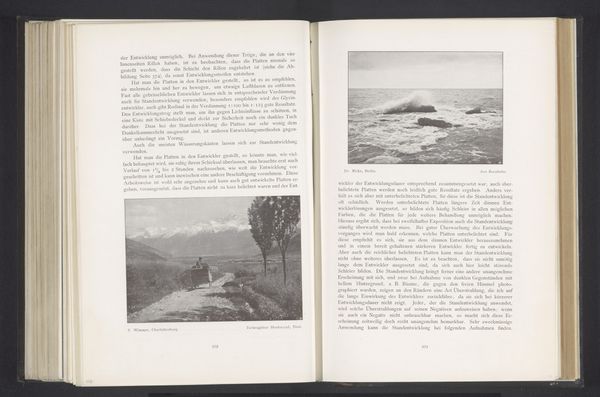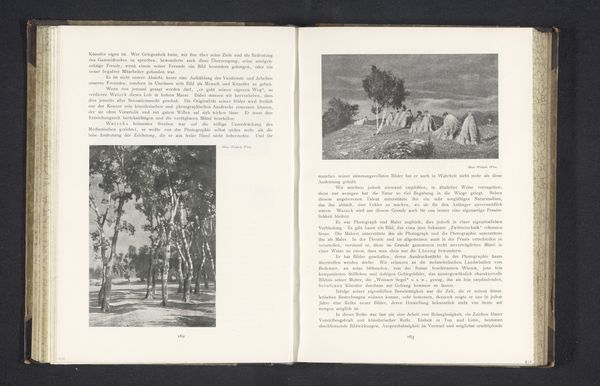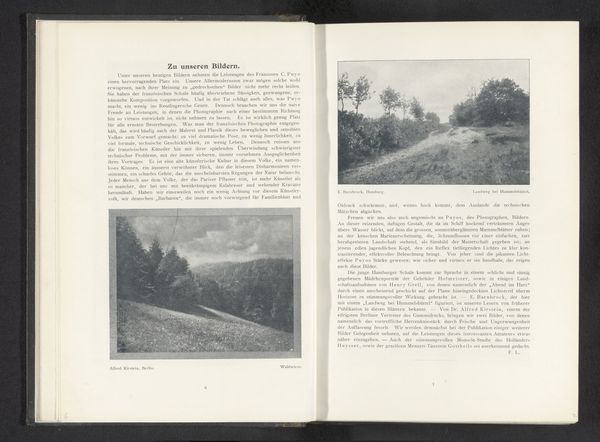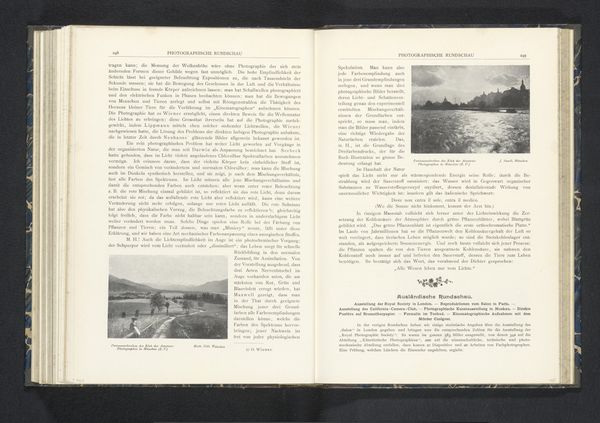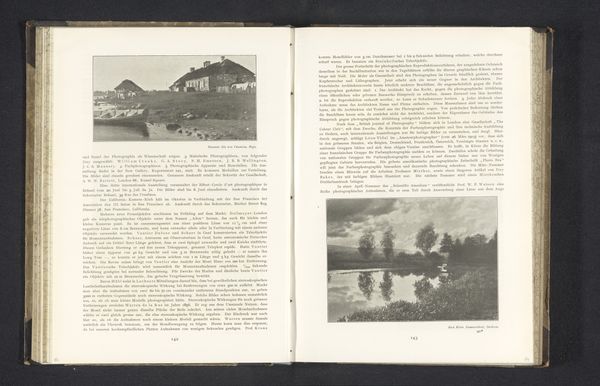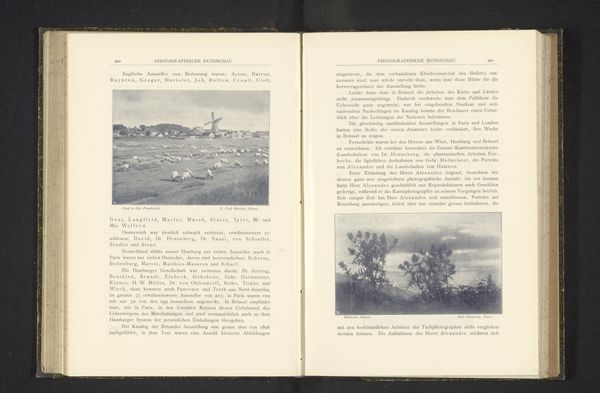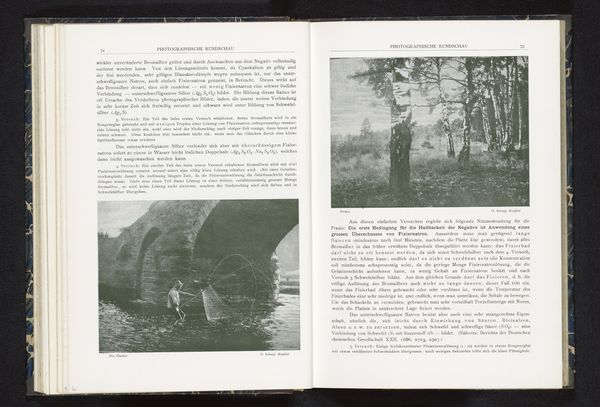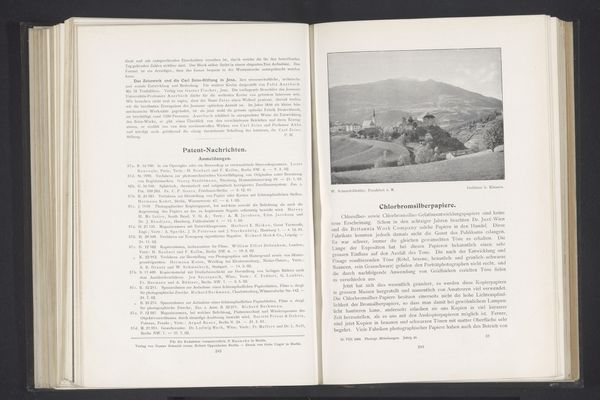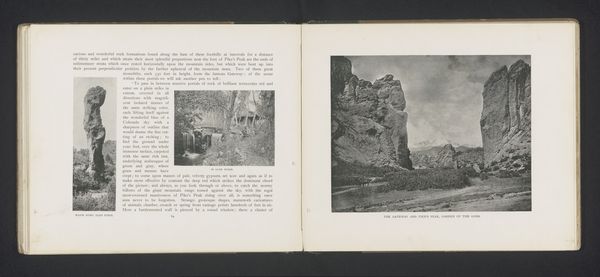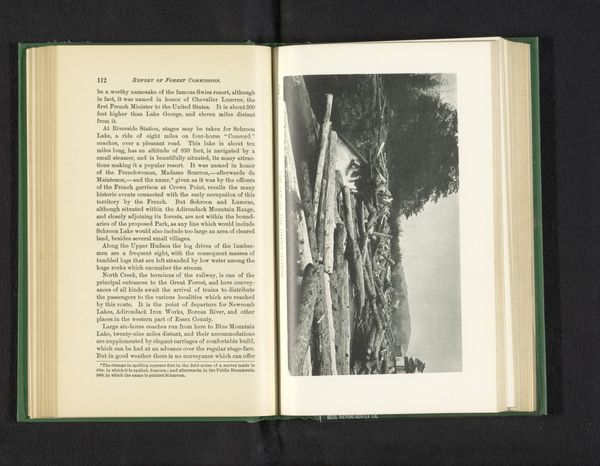
#
script typeface
#
aged paper
#
homemade paper
#
paper non-digital material
#
paperlike
#
editorial typography
#
thick font
#
publication mockup
#
handwritten font
#
publication design
Dimensions: height 93 mm, width 124 mm
Copyright: Rijks Museum: Open Domain
Curator: This image shows an open book. On the left page we see a work by W. Schmidt-Diehler, titled "Drie vrouwen oogsten aardappelen in het Zwarte Woud," or "Three women harvesting potatoes in the Black Forest," dated to before 1903. What strikes you about it? Editor: The texture! The photograph is printed on paper, but the texture is so complex—aged paper. It feels layered, homemade even. It looks more like a handcrafted object than a typical photo print. Curator: Agreed. The aged, almost coarse texture, speaks volumes about the context of production. Consider the socio-economic situation of the people represented. Harvesting potatoes in the Black Forest was arduous labor, not some romantic pastoral scene. Editor: Precisely. It also creates a stark contrast between the lives depicted and the printed medium itself. The tonal range is limited but effective, and it guides the eye to the workers and their labor. Note also how the black-and-white palette contributes to the feeling of somberness and authenticity. Curator: Yes, and how it echoes through the design and editorial typography on the surrounding page. We might consider how this visual decision affects our reception to the workers’ struggle within their means of production. What type of cultural narrative is perpetuated by this circulation? Editor: Good point! It makes you think about its original intended audience and circulation of publications—is this a means of creating empathy from its readership? It’s something to explore for the historical record. Curator: Absolutely. Analyzing this, and then comparing it to, say, contemporary depictions of agricultural work reveals changes in photographic practices. It also asks us to reconsider these earlier photographs. What are the class and social structures? Who is consuming the photographs? How do they frame rural life and labor for those outside of that reality? Editor: Well said. Examining this piece beyond the constraints of representation—focusing instead on its existence as a physical object allows for broader insight. The surface and substrate, coupled with the composition create its ultimate form. Curator: It serves as a vital reminder to analyze through means of production, beyond its immediate subject matter. Editor: Indeed. Looking beyond immediate surface appeals to the layered historical contexts gives its due diligence.
Comments
No comments
Be the first to comment and join the conversation on the ultimate creative platform.
